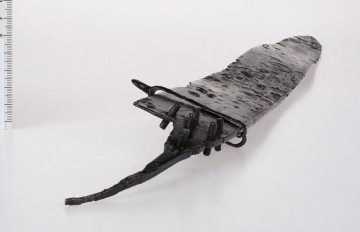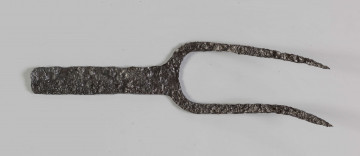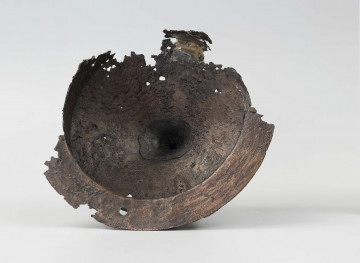
Sword
National Museum in Lublin
Part of the collection: Archaeological monuments of the Lublin region
An iron spearhead with a burr, probably used as a harpoon for catching fish, was discovered in the settlement of the Przeworsk culture in Nieszawa Kolonia, Opole county, Lublin voivodeship, located in the fork of the Vistula and Wyżnica Rivers.
The site was discovered in 1979 during surface research conducted by archaeology students of the Maria Curie-Skłodowska University in Lublin under the supervision of Professor Andrzej Kokowski. Systematic excavations were carried out by the staff of the Archaeology Department of the Lublin Museum in 1986: Anna Kloss (1986), Waleria Misiewicz and Marta Polańska (1996-1997) and Marta Stasiak-Cyran (1998-2008).
The small, iron, short spearhead of the jereed has widely spaced burrs. There is a third burr on the edge of the sleeve. The sleeve is undocked. The object is closest to harpoons - fishing implements - known from three graves in the Oblin cemetery in Mazovia, which are dated to the second half of the 2nd century AD.
In the context of other fishery-related artefacts found in the settlement, such as fishing hooks and net perches, as well as archaeozoological data, the harpoon from Nieszawa is an interesting source for building a picture of the food economy of the Przeworsk culture population.
Author / creator
Dimensions
cały obiekt: height: 7,4 cm
Object type
weapon
Technique
forging
Material
iron
Creation / finding place
Owner
The National Museum in Lublin
Identification number
Location / status

National Museum in Lublin

National Museum in Lublin

201 — 210
National Museum in Lublin
DISCOVER this TOPIC
National Museum in Szczecin
DISCOVER this PATH
Educational path